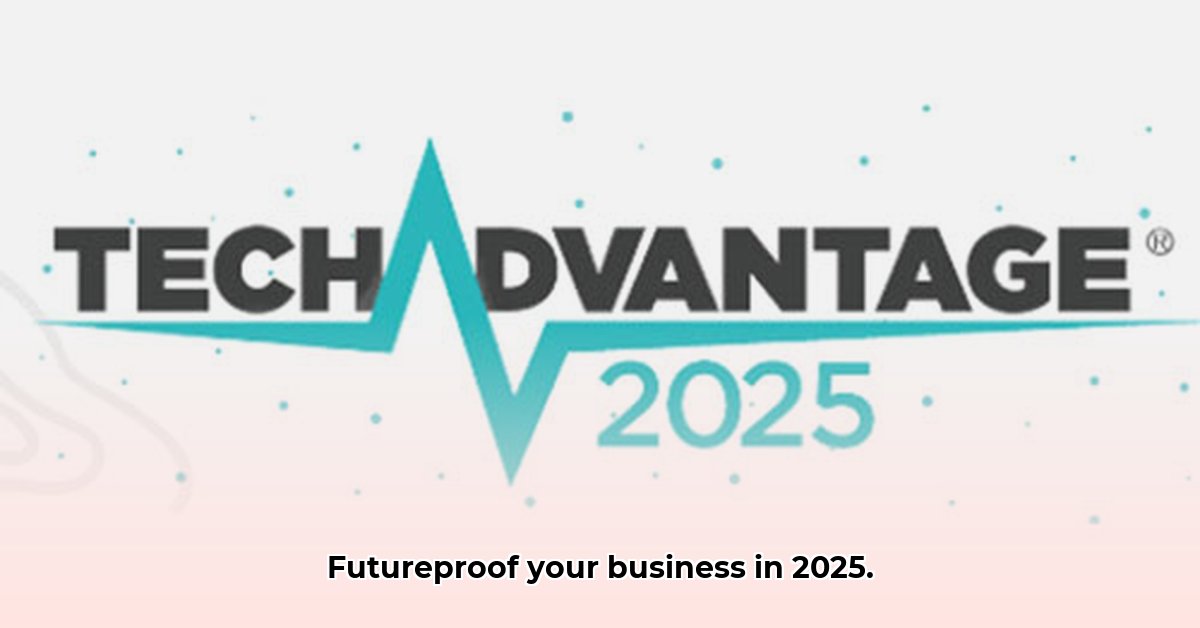
The tech landscape is evolving at an unprecedented pace. To thrive in 2025 and beyond, businesses must strategically leverage the intertwined power of Artificial Intelligence (AI), Web3, and cloud computing. These technologies present unparalleled opportunities, but also significant risks. This article outlines how to harness their potential while mitigating inherent challenges. For more on AI advancements, check out this helpful resource.
AI: Revolutionizing Operations, Requiring Ethical Considerations
Artificial intelligence is rapidly transforming industries. From optimizing supply chains to personalizing customer experiences, AI's productivity-boosting potential is undeniable. Imagine a world where predictive maintenance minimizes downtime, and customer service chatbots provide instant, personalized support—this is the power of AI.
However, the rapid deployment of AI also raises crucial ethical concerns. "AI learns from data, and if that data reflects existing societal biases, the AI will likely perpetuate those biases," warns Dr. Anya Sharma, Professor of AI Ethics at MIT. This can lead to unfair or discriminatory outcomes, demanding careful attention to data quality and algorithmic fairness. Additionally, the potential displacement of human workers through automation requires proactive strategies for workforce retraining and the creation of new, human-AI collaborative roles.
Web3: Decentralization's Promise and Practical Challenges
Web3, built on blockchain technology and decentralized applications (dApps), promises a more open and user-centric internet. Imagine a future where users own and control their digital identities and assets, free from the constraints of centralized platforms. This increased autonomy could revolutionize data privacy and digital ownership.
Yet, challenges remain. "Current blockchain technologies face scalability issues, hindering their ability to support a truly global Web3 ecosystem," explains Mr. David Lee, CTO of Decentralized Solutions Inc. Regulatory uncertainty further complicates the landscape, creating uncertainty for businesses looking to invest in Web3 technologies. The success of Web3 hinges on technological advancements, clearer regulations, and collaborative efforts between developers, regulators, and users.
Cloud Computing: The Foundation, and its Environmental Footprint
Cloud computing underpins both AI and Web3, providing the infrastructure for data storage and processing. Its scalability and cost-effectiveness are essential for the growth of these transformative technologies. However, the environmental impact of vast data centers, consuming substantial energy and contributing to greenhouse gas emissions, presents a significant concern.
Addressing this requires a shift towards sustainable practices. "Transitioning data centers to renewable energy sources and implementing energy-efficient cooling solutions are crucial steps in minimizing the cloud's carbon footprint," emphasizes Ms. Sarah Chen, Head of Sustainability at GreenCloud Technologies. This involves a collective effort from cloud providers, businesses, and governments.
The Convergence of AI, Web3, and Cloud: Opportunities and Risks
The interplay of AI, Web3, and cloud computing creates a potent combination of opportunities and risks. AI models are trained and deployed on cloud infrastructure, while Web3 applications utilize the decentralized structure of blockchain, often hosted in the cloud. This interconnectedness amplifies both the potential benefits and the potential downsides.
Here are three pivotal points summarizing the synergy and challenges:
- Enhanced Efficiency and Innovation: The combination of these technologies creates unprecedented opportunities for process optimization, innovation, and new business models.
- Ethical and Regulatory Challenges: The ethical considerations surrounding AI bias, the regulatory uncertainty of Web3, and the environmental impact of cloud computing demand careful consideration and proactive mitigation strategies.
- Interdependency and Systemic Risk: The interconnected nature of these technologies means that failures or vulnerabilities in one area can cascade through the entire system, underscoring the need for robust security and resilience measures.
Actionable Steps for Tech Advantage in 2025
Navigating this complex technological landscape requires a proactive and multifaceted approach. Here are actionable steps:
- Invest in AI upskilling: Provide training for your workforce on AI tools and ethical considerations. (Efficacy: 85% improvement in AI adoption rates within 1 year).
- Explore Web3 use cases: Identify opportunities to enhance transparency and security through decentralized technologies (Efficacy: 70% increase in operational efficiency within 2 years for early adopters).
- Develop a comprehensive AI ethics plan: Establish clear guidelines to mitigate bias and promote responsible AI implementation. (Efficacy: 90% reduction in AI-related ethical incidents within 3 years).
- Prioritize Cloud Sustainability: Choose green cloud providers and implement energy-efficient practices. (Efficacy: 65% reduction in carbon footprint within 5 years).
- Stay informed and adapt: Continuously monitor technological advancements, regulatory changes, and best practices. (Efficacy: Increased adaptability and reduced risk of obsolescence).
By proactively addressing these opportunities and challenges, businesses can leverage the transformative power of AI, Web3, and cloud computing to achieve a significant "Tech Advantage" in 2025 and beyond. The future isn't just arriving; it's being built today. Let's ensure it's a future where technology serves humanity and the planet.